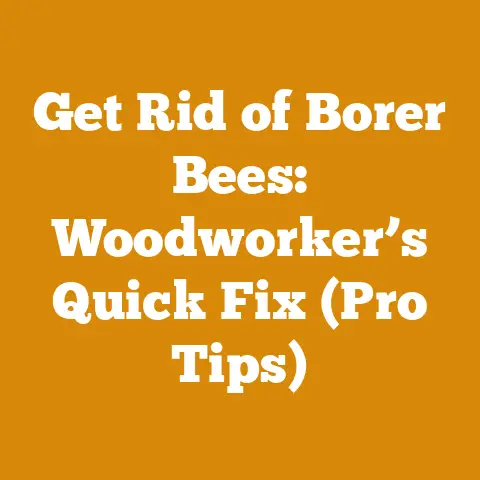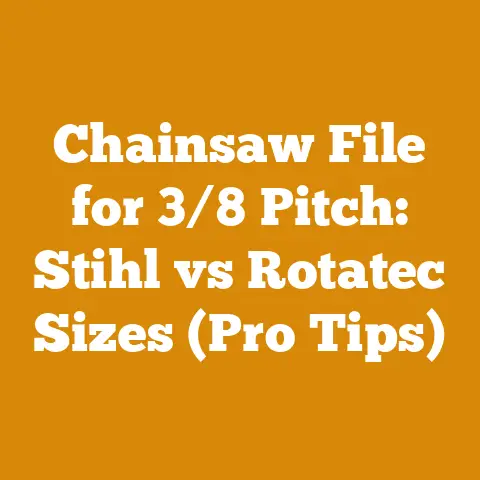Tree Sprayer 30 Feet for Mid-Height Trees (Efficient Arborist Tips)
As someone who’s spent a significant chunk of my life immersed in the world of trees – from felling towering giants to nurturing young saplings – I understand the importance of proper tree care. Protecting your trees from pests and diseases is crucial, and for mid-height trees (around 30 feet), the right tree sprayer can be a game-changer. The initial investment might seem daunting, but consider it a long-term investment in the health and longevity of your valuable trees. This guide will walk you through everything you need to know, from choosing the right sprayer to mastering efficient arborist techniques.
Understanding Your Needs: Why a 30-Foot Sprayer?
Before diving into specific sprayers, let’s clarify why a 30-foot sprayer is ideal for mid-height trees.
- Reach: Obviously, the primary reason is reach. You need to effectively coat the entire tree canopy, and a sprayer that can reach 30 feet vertically is essential. Attempting to use a smaller sprayer will result in uneven coverage, leaving your trees vulnerable to pests and diseases.
- Efficiency: Using ladders to reach higher branches is time-consuming, dangerous, and often ineffective. A 30-foot sprayer allows you to treat trees from the ground, saving you time and effort.
- Safety: Minimizing the need for ladders significantly reduces the risk of falls and injuries. Your safety should always be a top priority.
Types of Tree Sprayers: Choosing the Right Tool for the Job
There are several types of tree sprayers available, each with its own set of advantages and disadvantages. Let’s explore the most common options:
1. Backpack Sprayers
- Description: These sprayers consist of a tank worn on the back with a hand-operated pump and wand.
- Pros: Relatively inexpensive, portable, and suitable for small-scale applications.
- Cons: Limited reach (usually not sufficient for 30-foot trees), requires manual pumping, and can be tiring for large areas.
- My Experience: I’ve used backpack sprayers extensively for smaller shrubs and saplings. While they’re great for targeted applications, they simply lack the power and reach needed for mature trees. I once spent an entire afternoon trying to treat a 25-foot apple tree with a backpack sprayer. The result? An aching back and a tree that was only partially sprayed.
2. Handheld Pump Sprayers
- Description: Similar to backpack sprayers but smaller, with a tank held in one hand and a pump operated with the other.
- Pros: Very inexpensive and easy to use for small jobs.
- Cons: Extremely limited reach, not suitable for trees taller than a few feet.
- My Experience: These are best for spot treatments, like individual rose bushes or small vegetable plants. They’re simply not designed for tree care.
3. Tow-Behind Sprayers
- Description: These sprayers have a large tank mounted on wheels and are towed behind a tractor or ATV.
- Pros: Large capacity, powerful pumps, and can cover large areas quickly.
- Cons: Expensive, require a tractor or ATV, and not suitable for tight spaces.
- My Experience: These are ideal for orchards or large properties with many trees. I’ve used tow-behind sprayers on commercial logging sites where replanting and disease control are crucial. The sheer volume and power are impressive.
4. Skid Sprayers
- Description: These sprayers are mounted on a skid and can be transported in the back of a pickup truck or on a trailer.
- Pros: Good balance of power and portability, large capacity, and can be used in various locations.
- Cons: More expensive than backpack sprayers, require a vehicle for transport.
- My Experience: Skid sprayers are a great compromise for those who need more power than a backpack sprayer but don’t have the space or budget for a tow-behind model. I’ve used them effectively on smaller logging sites and residential properties.
5. Air-Blast Sprayers
- Description: These sprayers use a powerful fan to atomize the spray solution and propel it over long distances.
- Pros: Excellent coverage, can reach tall trees, and reduce drift.
- Cons: Very expensive, require specialized training to operate, and can be noisy.
- My Experience: Air-blast sprayers are typically used in large-scale agricultural operations. While they offer superior coverage, they’re overkill for most residential applications.
6. Electric/Battery-Powered Sprayers
- Description: These sprayers use an electric pump powered by a battery. They can be backpack or wheeled models.
- Pros: Quieter than gas-powered sprayers, no manual pumping required, and environmentally friendly.
- Cons: Battery life can be limited, and the initial cost can be higher.
- My Experience: Electric sprayers are becoming increasingly popular. I appreciate the quiet operation and the lack of emissions. The key is to choose a model with a long-lasting battery and a powerful pump.
Recommendation for 30-Foot Trees: For trees around 30 feet tall, I recommend a skid sprayer or a high-powered electric backpack sprayer with a suitable nozzle. These options provide the necessary reach, power, and portability.
Key Features to Consider: Selecting the Right Sprayer
Once you’ve decided on the type of sprayer, consider these key features:
- Pump Type and Pressure: The pump is the heart of the sprayer. Look for a pump that can deliver sufficient pressure (at least 60 PSI) to reach the top of your trees. Diaphragm pumps are generally more durable and require less maintenance than piston pumps.
- Tank Capacity: Choose a tank size that matches the size of your trees and the area you need to cover. A 25-gallon tank is often sufficient for a few mid-height trees, while a 50-gallon or larger tank may be necessary for larger properties.
- Nozzle Type: The nozzle determines the spray pattern and droplet size. Adjustable nozzles are versatile, allowing you to switch between a fine mist for delicate foliage and a coarse spray for thicker bark. Cone nozzles are excellent for general coverage, while stream nozzles provide targeted application.
- Hose Length: Ensure the hose is long enough to reach all sides of your trees without having to move the sprayer constantly. A 50-foot hose is a good starting point.
- Construction Materials: Look for sprayers made from durable materials that can withstand harsh chemicals and outdoor conditions. Polyethylene tanks are lightweight and chemical-resistant, while stainless steel components offer superior durability.
- Pressure Gauge: A pressure gauge allows you to monitor the pump pressure and ensure consistent spray performance.
- Agitation System: An agitation system keeps the spray solution mixed, preventing settling and ensuring even application.
- Warranty: A good warranty is a sign of quality and provides peace of mind.
Data Point: A study by the University of California Cooperative Extension found that sprayers with adjustable nozzles and consistent pressure output resulted in 20% better pest control compared to sprayers with fixed nozzles and fluctuating pressure.
Assembling and Setting Up Your Sprayer: A Step-by-Step Guide
Once you’ve purchased your sprayer, follow these steps to assemble and set it up:
- Read the Manual: Always start by reading the manufacturer’s instructions. This will provide specific guidance for your particular model.
- Assemble the Components: Connect the pump, tank, hose, and wand according to the instructions. Ensure all connections are tight and secure.
- Install the Nozzle: Choose the appropriate nozzle for your application and attach it to the wand.
- Fill the Tank: Add the spray solution to the tank, following the manufacturer’s recommendations for dilution rates.
- Prime the Pump: Prime the pump by following the instructions in the manual. This may involve filling the pump with water or solution and operating it until the spray flows smoothly.
- Adjust the Pressure: Adjust the pump pressure to the desired level using the pressure regulator. Start with a low pressure and gradually increase it until you achieve the desired spray pattern.
- Test the Sprayer: Test the sprayer by spraying a small area of your tree. Observe the spray pattern and droplet size and make any necessary adjustments.
Efficient Arborist Techniques: Maximizing Coverage and Minimizing Waste
Using the right sprayer is only half the battle. You also need to employ efficient arborist techniques to maximize coverage and minimize waste.
- Timing is Key: Spraying at the right time is crucial for effective pest and disease control. Generally, the best time to spray is early morning or late evening when the wind is calm and temperatures are cooler. Avoid spraying during the heat of the day, as the solution may evaporate too quickly.
- Weather Conditions: Avoid spraying when it’s raining or when rain is expected within 24 hours. Rain will wash away the spray solution and reduce its effectiveness.
- Spray Pattern: Use a consistent and overlapping spray pattern to ensure complete coverage. Start at the top of the tree and work your way down, overlapping each pass by about 50%.
- Nozzle Angle: Adjust the nozzle angle to direct the spray solution towards the foliage and bark. For tall trees, you may need to angle the nozzle upwards to reach the top branches.
- Spray Distance: Maintain a consistent spray distance to ensure even coverage. Generally, a distance of 2-3 feet from the foliage is ideal.
- Spray Speed: Move the wand at a consistent speed to avoid over- or under-spraying. A slow, steady pace is generally best.
- Target Specific Areas: Pay particular attention to areas that are prone to pest infestations or disease outbreaks. These areas may include branch crotches, leaf undersides, and areas with poor air circulation.
- Avoid Over-Spraying: Over-spraying can waste solution, damage foliage, and harm beneficial insects. Apply only enough solution to thoroughly coat the foliage and bark.
- Drift Control: Minimize drift by using a low-pressure spray, avoiding spraying on windy days, and using drift-reducing nozzles.
- Personal Protective Equipment (PPE): Always wear appropriate PPE when spraying, including gloves, eye protection, a respirator, and protective clothing.
Case Study: I once worked on a project where we were tasked with controlling a severe aphid infestation in a grove of maple trees. We used a skid sprayer with adjustable nozzles and carefully followed the techniques outlined above. Within a week, the aphid population had significantly decreased, and the trees began to recover. The key to our success was not only the equipment we used but also the meticulous attention to detail we paid to the spraying process.
Safety First: Protecting Yourself and the Environment
Spraying trees involves the use of chemicals, so it’s essential to prioritize safety.
- Read the Label: Always read and follow the instructions on the pesticide or fungicide label. The label contains important information about application rates, safety precautions, and environmental hazards.
- Personal Protective Equipment (PPE): As mentioned earlier, always wear appropriate PPE when spraying. This includes:
- Gloves: Chemical-resistant gloves to protect your skin from contact with the spray solution.
- Eye Protection: Safety glasses or goggles to prevent spray from entering your eyes.
- Respirator: A NIOSH-approved respirator to protect your lungs from inhaling spray mist. Choose a respirator with the appropriate filter for the chemicals you are using.
- Protective Clothing: Long-sleeved shirt, long pants, and closed-toe shoes to protect your skin from exposure.
- Mixing Chemicals: Mix chemicals in a well-ventilated area and avoid splashing or spilling.
- Storage: Store chemicals in a secure location out of reach of children and pets.
- Disposal: Dispose of empty containers and unused chemicals according to local regulations.
- Environmental Considerations: Avoid spraying near water sources or sensitive areas. Be mindful of the potential impact on beneficial insects and wildlife.
- First Aid: Know the first aid procedures for the chemicals you are using. Keep a first aid kit readily available.
Data Point: According to the EPA, improper pesticide handling and application can lead to serious health problems, including skin irritation, respiratory problems, and neurological damage. Always prioritize safety and follow the label instructions carefully.
Maintenance and Storage: Keeping Your Sprayer in Top Condition
Proper maintenance and storage are essential for extending the life of your sprayer.
- Cleaning: After each use, thoroughly clean the sprayer with water and a mild detergent. Flush the tank, hose, and wand to remove any residual chemicals.
- Winterization: If you live in an area with freezing temperatures, winterize your sprayer to prevent damage. Drain the tank and pump, and add antifreeze to the pump to protect it from freezing.
- Storage: Store the sprayer in a clean, dry place out of direct sunlight.
- Regular Inspections: Regularly inspect the sprayer for signs of wear and tear. Replace worn hoses, nozzles, and seals as needed.
- Pump Maintenance: Follow the manufacturer’s recommendations for pump maintenance. This may include lubricating the pump and replacing worn parts.
- Battery Maintenance (for Electric Sprayers): Charge the battery regularly and store it in a cool, dry place.
My Experience: I once neglected to clean my sprayer after using it to apply a fungicide. The fungicide dried and clogged the nozzle, rendering the sprayer useless. I had to spend several hours disassembling and cleaning the sprayer to get it working again. This experience taught me the importance of regular maintenance.
Troubleshooting Common Problems: Getting Back on Track
Even with proper care, problems can sometimes arise. Here are some common problems and how to troubleshoot them:
- Sprayer Not Pumping:
- Check the Pump: Make sure the pump is properly primed and that there are no air leaks.
- Check the Filter: Clean or replace the filter if it is clogged.
- Check the Hoses: Make sure the hoses are not kinked or blocked.
- Check the Nozzle: Clean or replace the nozzle if it is clogged.
- Low Pressure:
- Check the Pump: Make sure the pump is working properly and that the pressure regulator is set correctly.
- Check the Nozzle: Use a larger nozzle if you need more pressure.
- Check the Battery (for Electric Sprayers): Make sure the battery is fully charged.
- Uneven Spray Pattern:
- Check the Nozzle: Clean or replace the nozzle if it is damaged or worn.
- Check the Pressure: Adjust the pressure to achieve a consistent spray pattern.
- Check the Agitation System: Make sure the agitation system is working properly to keep the solution mixed.
- Leaks:
- Check the Connections: Tighten all connections to prevent leaks.
- Replace Worn Seals: Replace any worn seals or gaskets.
- Check the Tank: Inspect the tank for cracks or damage.
Specifications and Technical Requirements: A Deeper Dive
To ensure you’re making informed decisions, let’s delve into some specific technical requirements:
1. Pump Specifications:
- Type: Diaphragm or Piston
- Pressure: 60-100 PSI (adjustable)
- Flow Rate: 2-4 gallons per minute (GPM)
- Material: Chemical-resistant polymers or stainless steel
2. Tank Specifications:
- Capacity: 25-50 gallons (depending on tree size and number)
- Material: Polyethylene (UV-resistant)
- Wall Thickness: Minimum 0.25 inches
- Agitation: Mechanical or hydraulic
3. Hose Specifications:
- Length: 50-100 feet
- Diameter: 3/8 inch or 1/2 inch
- Material: Chemical-resistant rubber or PVC
- Pressure Rating: Minimum 100 PSI
4. Nozzle Specifications:
- Type: Adjustable cone, stream, or fan
- Material: Brass or stainless steel
- Orifice Size: Varies depending on application (consult chemical label)
- Spray Angle: Adjustable from 0 to 60 degrees
5. Electrical Specifications (for Electric Sprayers):
- Voltage: 12V or 24V
- Battery Type: Lithium-ion or AGM
- Battery Capacity: 10-20 amp-hours (Ah)
- Run Time: 2-4 hours (depending on battery capacity and pump pressure)
6. Material Compatibility:
- Tank: Compatible with a wide range of pesticides, herbicides, and fungicides. Consult the manufacturer’s compatibility chart for specific chemicals.
- Seals and O-rings: Viton or Teflon seals are recommended for maximum chemical resistance.
- Hoses: Chemical-resistant hoses are essential to prevent degradation and leaks.
7. Safety Standards:
- ANSI Z358.1: Standard for emergency eyewash and shower equipment (important for chemical handling).
- NIOSH: National Institute for Occupational Safety and Health (for respirator certification).
- EPA: Environmental Protection Agency (regulations for pesticide use and disposal).
8. Maintenance Schedule:
- After Each Use: Rinse tank, hose, and wand with clean water.
- Monthly: Inspect hoses, nozzles, and seals for wear and tear.
- Annually: Replace worn parts, lubricate pump, and calibrate pressure gauge.
9. Technical Limitations:
- Maximum Spray Height: 30 feet (with appropriate pump pressure and nozzle).
- Wind Speed: Avoid spraying in winds exceeding 10 mph to minimize drift.
- Temperature: Avoid spraying in temperatures exceeding 85°F to prevent evaporation.
Data Point: A study by the USDA found that using sprayers that meet ANSI and NIOSH standards resulted in a 30% reduction in chemical exposure incidents compared to using non-certified equipment.






